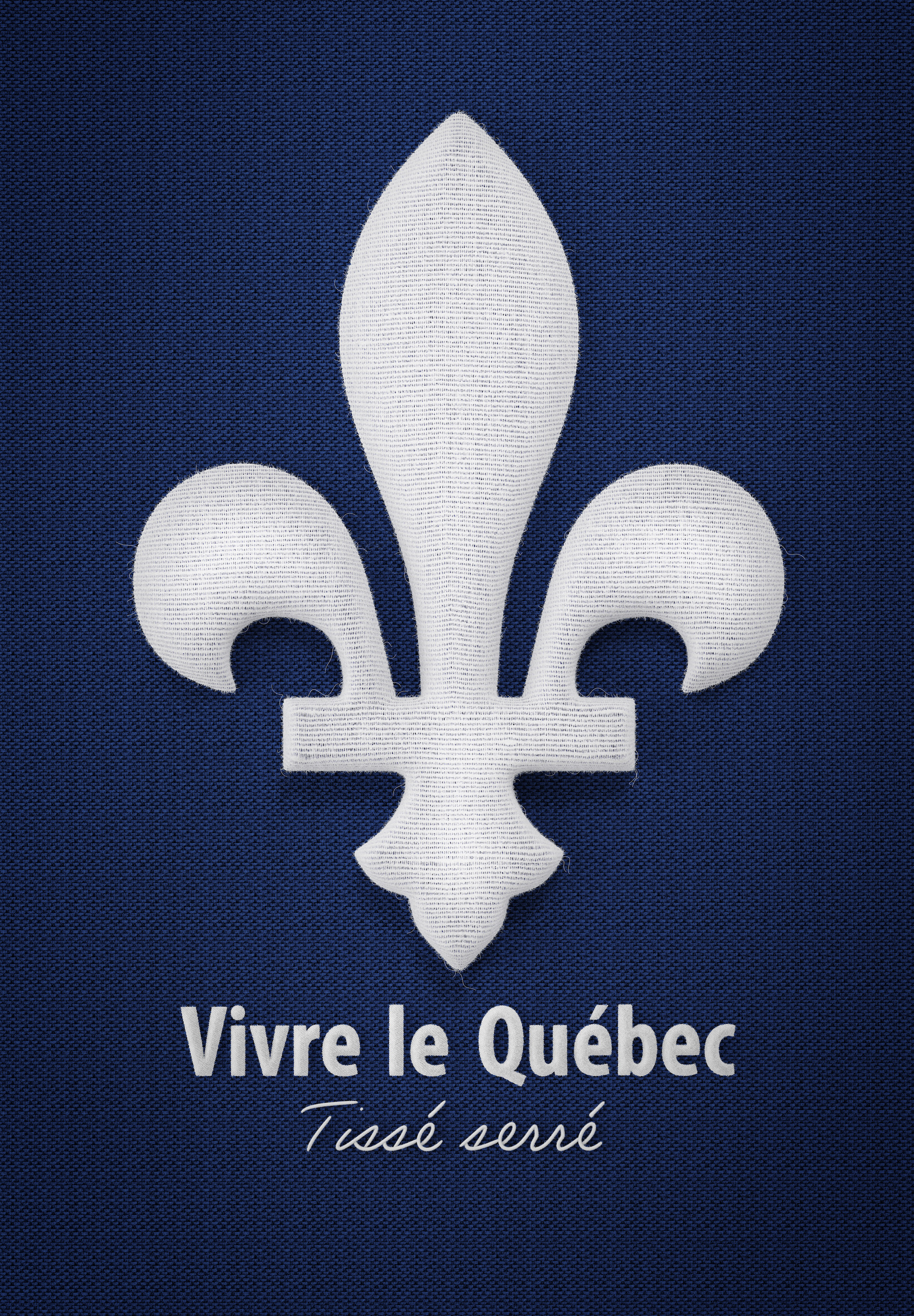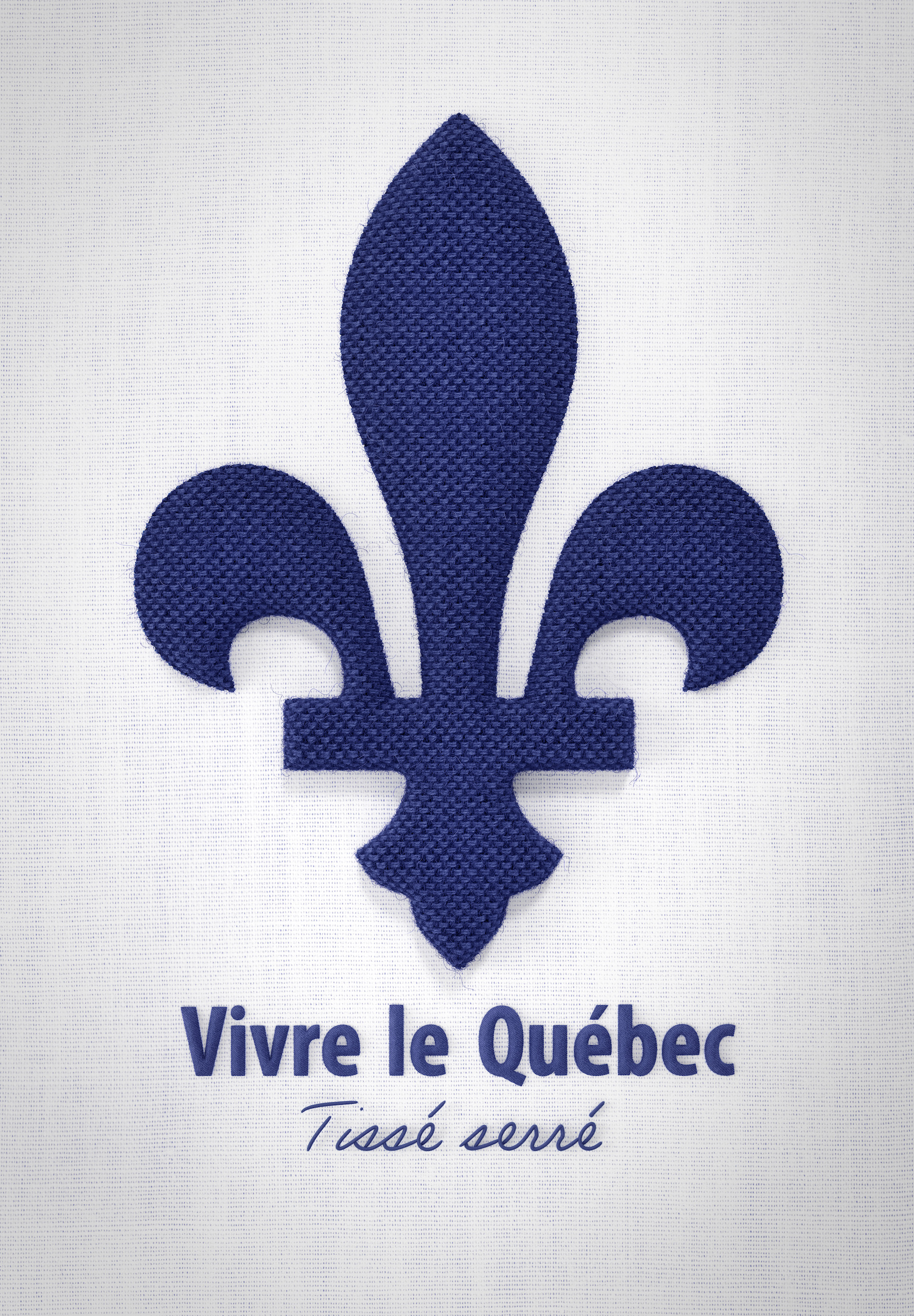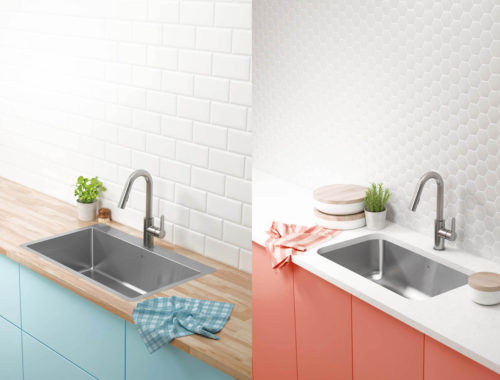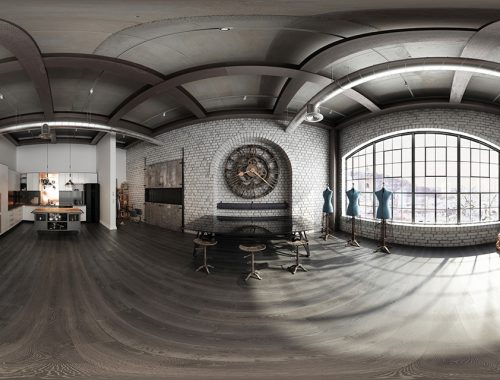Filed under: Making-of, Portfolio, Pourquoi la 3D.
The theme for Quebec’s 2021 national holiday? “Vivre le Québec : tissé serré!” [Long live Quebec, a close-knit people]. The aim? To emphasize just how much Quebecers have rallied around and helped each other throughout these long months of the pandemic. At Kub Studio, we don’t do knitting or weaving, but with talented 3D artists, it’s almost as though we do! Let’s look at how 3D helped to create an authentic image… as authentic as Quebecers themselves.
The commission
The team behind the national holiday wanted to depict Quebec’s complex, inclusive and diverse culture. To do so, this year, in addition to our national colours and traditional fleur-de-lis, a woven texture was also brought into play. As there are several versions of the logo and it would be featured on many different visual elements, making an actual woven material was out of the question. Just imagine the painstaking task! Nonetheless, the team needed the texture to appear authentic, with fine details, which would come across well even on larger posters and billboards. And that’s why the team turned to 3D imagery and Kub Studio.
If the image had been created in 2D, the texture would have looked like a drawing of a weave. The studio’s task therefore was to apply texture to the existing logo so that it looks real, so that the image looks like a photo.
The technique
First of all, our designers had to make a model of the fleur-de-lis. Modelling is like sculpting the object you want to depict. It’s creating an object in the digital space by giving it width and length, obviously, but also by proving depth and relief. In short, the hallmark of 3D.
Secondly, the key component of the project was to apply the texture to the model.
“Applying texture to a model is a bit like having a one inch square piece of fabric and having to cover an entire tablecloth with it. You need to flatten it out so that it takes the shape of the tablecloth. You need to get rid of the seams where the first piece of fabric ends and second starts. And you have to use that same piece of fabric to create the entire collage. Therefore, if there’s a defect or imperfection, it needs to be neutralized, otherwise it will recur across the entire tablecloth.” Victor, Production Manager.
In practical terms, the idea was to find a digital sample of the texture, a photo of a weave in very high resolution. Next, any forms or relief had to be eliminated and all defects or particularities removed, before giving it the desired colour. Our task was ultimately to apply this sample over the entire model of the fleur-de-lis. The same process was followed for the background and lettering.
Finally, we needed to create the right lighting. The chosen effect was that of a projector, making it look as though the photo had been taken in the studio.
The challenge
Quebecers are very proud and their national holiday is therefore advertised everywhere, and often on very large media. We need only think of the show televised every year and the giant screens surrounding the stage. The logo would appear on printed as well as digital displays. The challenge therefore was to produce this visual with incredible accuracy and render it in very high resolution.
This precision work began at a very early stage, when it came to selecting the texture we described earlier. In fact, if the texture isn’t accurate from the outset, it won’t be any more so once it’s been reworked, let alone enlarged, even though detective television series want us to believe otherwise. You know, the ones where the investigators finally glimpse the face of the perpetrator on video tape and pause it, and then enlarge and enhance the image? Well… it’s not true. If the original image is pixelated, it will be equally so when enlarged, because that’s the way the image was when it was captured.
Having said that, even though the technical aspects of video and 3D are slightly different, the principle is the same: the details in the image must be perfected from the start. If there are any imperfections, they will become all the more apparent once they are highlighted and magnified.
Looking at the fluffy little tendrils escaping from the surface of the fleur-de-lis, we can indeed say mission accomplished!
Additional uses
Modelling and texture mapping are particularly useful for the manufacturers of these textures, especially in the textile industry.
A new collaborator told us recently:
“We make fabric, which we then sell to furniture manufacturers. We therefore have loads of photos of bolts of fabric, but none of the actual furniture! To obtain images of the finished products, we have to depend on the goodwill of the manufacturers, who have plenty of other things to do, or hope to stumble across a piece of furniture in a hotel lobby, recognize our fabric and then take a photo with a cell phone.”
In short, for fabric manufacturers, one of the greatest challenges is often obtaining photos of their products in their end-use application. They constantly struggle to explain what they do and how they do it in order to engage their clientele because they don’t have the visuals to capture their attention and interest. And that’s where 3D becomes an excellent alternative.
For this new collaborator, we will therefore be modelling furniture, which we’ll then cover with their fabrics. For example, if they manufacture a certain type of faux leather, we could model an armchair and cover it with this material; position the armchair in a refined and hushed hotel lobby and presto! Their client has been won over… a lot more easily than if they’d only seen photos of bolts of fabric.

For an experienced 3D artist, a project like the one for the 2021 Quebec national holiday logo isn’t complicated. The end result, however, is anything but ordinary. It’s an image that you can easily picture in your mind, but it would have been very difficult to actually create it “for real.” And that’s the magic of 3D: the ability to bring any product of the imagination to life.
Filed under: Making-of, Portfolio, Pourquoi la 3D.
What about you? What amazing idea would you like to see brought to life?
Let's talk about it!Read more
View all posts




